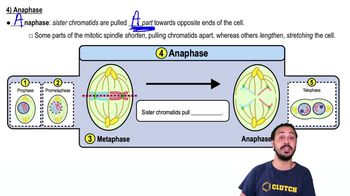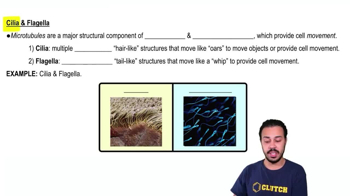Here are the essential concepts you must grasp in order to answer the question correctly.
Anaphase
Anaphase is a stage in mitosis where sister chromatids are pulled apart toward opposite poles of the cell. This process is crucial for ensuring that each daughter cell receives an identical set of chromosomes. During anaphase, the cohesin proteins that hold the sister chromatids together are cleaved, allowing them to separate and move due to the action of the spindle apparatus.
Recommended video:
Kinetochore Microtubules
Kinetochore microtubules are specialized structures that connect the spindle apparatus to the kinetochore, a protein complex assembled on the centromere of each chromosome. These microtubules play a vital role in chromosome movement during cell division by exerting forces that pull the chromatids apart. Their dynamic nature allows them to grow and shrink, facilitating the separation of chromosomes.
Recommended video:
Microtubule Shortening
Microtubule shortening refers to the process where the length of microtubules decreases, which is essential during anaphase for the movement of chromosomes. This shortening occurs through the depolymerization of tubulin subunits at the kinetochore end of the microtubules. Evidence for this process can be observed through live-cell imaging and experiments that track the dynamics of microtubules during cell division.
Recommended video:
 Verified step by step guidance
Verified step by step guidance



 3:21m
3:21m